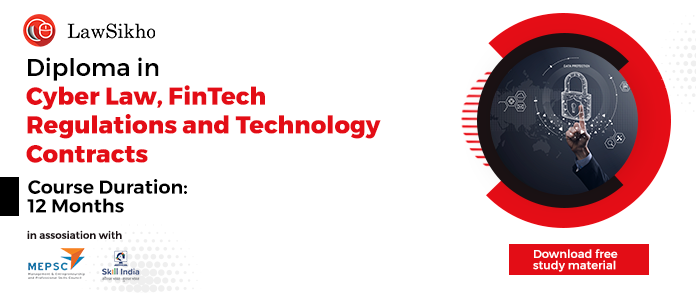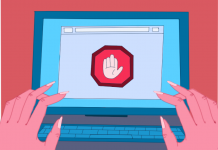This article is written by Daisy Jain, pursuing B.COM.LLB (Hons) from the Institute of Law, Nirma University. This is an exhaustive article which deals with the legal remedies available against online bullying.
Table of Contents
Introduction
The development of technology has resulted in the relocation of many significant real-world activities to the digital world. Increasing reliance on the internet for projects, school, work, colleges, and social purposes also functions as a forum for venting one’s anguish and hostility, which would otherwise be impossible to do in a more formal environment. The virtual space is inundated with traffic, necessitating the adoption of legislation to regulate and rigor the online growing threat that is unleashing chaos and destruction on the lives of children and teenagers. The internet and cyberspace can, without a question, be used for findings and creative endeavors, but the probability of using the internet for illegal activities cannot be ignored or dismissed. Bullies can harass their helpless prey with little or no liability and without fear of repercussions because they have access to the internet on their mobile devices 24 hours a day and seven days a week.
Bullying, no matter what kind it is, has the effect of bringing people down. It can occur at any time and from any location, including school, college, work, home, and even over the internet, to name a few examples. A distinction should be made between bullying that occurs in front of you and bullying that occurs online, as you have less control and no way to run away from online bullying, whereas you do have an option to evade bullying that occurs in front of you in the physical world.
Cyberbullying or online bullying
In the broad definition of cybercrime, cyberbullying or cyberharassment is also identified as online bullying. As a result, it is critical to comprehend what constitutes cyberbullying and harassment to prevent it from happening to someone else. Bullying can be defined as an act “actively sought to harm or harass (someone considered to be resilient)”. As a result, any individual or group of individuals who attempt to harm, manipulate, harass, or intimidate another is referred to as bullying the latter.
‘Cyberbullying’, according to cybercrime experts, is defined as “a hostile, deliberate act or an omission that is performed out by a particular person or group utilizing electronic forms of contact against a sufferer who is unable to safeguard himself or herself, repetitively and overtime.” When an individual or group of people bully or intimidate any other individual through the use of digital technologies, whether on the internet or in another virtual realm, this is referred to as cyberbullying or cyber harassment. Sharing personal photos and videos without permission, phishing groups, spam groups, or a particular person, making fake accounts, body shaming, making memes and videos of people making mistakes, especially celebrities, and so on are examples of this. Such conduct or actions are most commonly seen on social networking platforms such as Youtube, Instagram, Twitter, Facebook, and others, as well as through SMS, Instant Messages (IM) services such as iMessage, FB Messenger, WhatsApp, and others, as well as via e-mail, discussion groups, and even gaming sites, among other places.
Cyberbullying can occur for a variety of reasons, including enmity, envy, the feeling of insecurity, and a variety of other reasons. It takes place on social media sites in various forms such as messages or e-mail, by making comments on someone’s post or video on social media sites in a pessimistic or aggressive way, which injures the feelings of an individual about whom they are written. It can also occur when someone degrades, writes, or posts something hurtful, which can be in the form of sound, video, or text. Cyberbullying is the term used to describe the act of posting such information on the internet.
Different types of cyberbullying
Different methods are used by bullies to trouble people by their negative thoughts in different situations. Cyberbullying, like social media, is a varied and prevalent phenomenon with many different forms and manifestations. It is, therefore, necessary to understand the different types of cyberbullying to empower parents and adolescents to report cyberbullying and take preventative measures against cyberbullying. Cyberbullying can take place in a variety of ways, including:
Exclusion
Exclusion is the intentional act of abandoning somebody out of something. Exclusion is common in in-person bullying instances, but it can also be used to attack and bully a victim over the internet. It is possible that your child will be excluded from or refused entry into social gatherings, even though they see other mates being welcomed, or that they will be excluded from message posts or chats that constitute friends in common.
Harassment
Although cyberbullying is a wide definition that encompasses many kinds of behavior, harassment is generally defined as an ongoing structure of hurtful or endangering online messages sent to cause injury to another person.
Outing/doxing
An outing also referred to as doxing, is the act of publicly disclosing sensitive or private data about someone without their permission with the intent of embarrassment or humiliation of that person. From the dissemination of private pictures or documents of public figures to the sharing of a person’s saved private chats in an online private group, this can take many different forms. The crucial factor is the victim’s refusal to give consent.
Trickery
Trickery is related to an outing, but with the addition of deceit as a component. In this scenario, the bully will make friends with their victim to entice them into a fictitious sense of confidence. Once a bully has acquired the trust of their attacker, they will take advantage of that trust by disclosing the victim’s secret information and personal data to third parties.
Cyberstalking
It is a primarily serious form of cyberbullying that can escalate to the point of threatening physical harm to the individual who is the victim of the harassment. Stalking can involve a variety of tactics such as surveillance, false accusations, and dangers, and is frequently complemented by offline stalking. If found guilty, the offender will face legal consequences such as restraining orders, probation, and possibly even jail time if convicted.
Fraping
A bully may use your child’s social networking accounts to post unsuitable content under their name, which is known as fraping. When friends post hilarious messages on each other’s social media profiles, it can be considered harmless, but it has the potential to be extremely harmful. For example, a bully posting racial insults through someone else’s profile to tarnish their public image is considered harassment.
Masquerading
A bully uses masquerading when he or she creates an entirely fictitious profile or identity for the sole purpose of cyberbullying another person. This could include creating a fictitious email account and social media profile, as well as selecting a novel identity and photos to deceive the victim. In these situations, the bully is usually someone who the victim is familiar with and trusts.
Dissing
Dissing is the act of a bully disseminating inhumane details about any person through public posts or personal messages to either spoil any person’s public image or their interpersonal relationships with other people. Typically, in these circumstances, the bully and the victim have a personal relationship with one another, either as a casual familiarity or as a friendship.
Trolling
Trolling is when a bully goes out of his or her way to deliberately frustrate others by posting incendiary remarks on social media platforms. Although trolling is not always considered a form of cyberbullying, when done with deceptive and detrimental intent, it can be used as a weapon for cyberbullying. Bullies who are more detached from their victims and who do not have a close connection with them are the ones who commonly troll.
Flaming
When someone engages in online bullying, they either post about it or explicitly send personal attacks and vulgarities to the victim(s). The act of flaming is almost equivalent to trolling, but it is usually a more direct attack on a victim with the intent of provoking them into an online battle.
Legal remedies
Even though there is no particular law that criminalizes cyber-bullying in India, some sections of the Information Technology Act, 2000, as well as the Indian Penal Code, 1860, deal with these issues and can be considered to fall within the broad definition of cyber-bullying.
Legal remedy under Information Technology Act, 2000
The Information Technology Act was enacted solely to deal with issues relating to e-commerce, as is apparent from its preamble. However, it has been construed by the courts to deal with issues relating to cyberbullying, cyberstalking, and other forms of cyber harassment. Chapter 11 of the Information Technology Amendment Act, 2000, includes offences where there is no specific definition of the crime of cyberbullying in this chapter. Although the act provides legal remedies against the same under Sections 66 and 67, they are not always effective. Some of the most important provisions of the IT Act that deal with cyberbullying are as follows:
- Section 66A of the Information Technology Act, 2000, deals with the transfer of offensive messages through communication services, etc. This Section provided genuine victims of cyber harassment with a possible chance to acquire instant relief against subject matter that may be demeaning or harmful. Its repeal has left police authorities powerless in the face of the growing threat of cyberbullying, which is on the rise.
- Section 66C defines the punishment for identity theft.
- Section 66D of the IT Act deals with personation and the use of a computer resource to cheat.
- Section 66E of the IT Act deals with the punishment for violating someone’s privacy.
- Section 67 deals address the punishment for publishing or transferring obscene material via electronic means.
- Section 67A deals with the punishment for publishing or transferring material comprising sexually explicit acts, images, or other content through electronic means.
- Section 67B deals with the punishment for publishing or transferring material comprising sexually explicit acts, images, or other content which portrays children through electronic means.
Legal remedy under Indian Penal Code, 1860
According to the Indian Penal Code, remedies were available in the event of defamatory conduct or an act that was offensive to the modesty of women. The Act was amended in 2013, and new offences were added, including cyberstalking, which was made a criminal offence. The following sections of the Indian Penal Code (IPC) deals with cyberbullying in one way or another:
- Section 292, which deals with the printing of inappropriate matter or matter for blackmail, states that the matter must be harmful to morality or measured to injure a person and that the perpetrator will be imprisoned for a maximum of two years, as well as be subjected to a fine.
- According to Section 354A, making or insisting sexually colored remarks, as well as being guilty of the crime of sexual harassment, as well as displaying pornography against the will of the women, are all subjected to punishment.
- Section 354C provides that a cyberbully can be prosecuted for taking photographs and can be held liable under this Section and other sections if he distributes or publishes the photographs.
- As per Section 354D, if a woman is stalked or attempted to be stalked by another person, such person can be held liable for three years for the first attempt and a maximum of five years for any later attempts.
- Section 499 addresses defamation, which is defined as, when a person, through verbal words or signs, creates or publishes something with the intent of harming the public image of another person. Defamation can be committed through electronic means as well and Section 500 talks about the punishment for defamation.
- Section 503 talks about the offence, where the person sends threatening messages through the mail.
- According to Section 507, criminal intimidation through any unidentified communication or means is prohibited, and the offender will be liable for up to two years in prison if he or she is found guilty.
- According to Section 509 of the Indian Penal Code, offenders who intend to disrespect the modesty of a woman by words or gestures, which can also be done through electronic means, by invading the privacy of the woman, will be punished with imprisonment for one year or a fine or both.
Procedure to follow when you are bullied online
A cybercrime of online bullying can be reported to the cybercrime units in any city, regardless of where it occurred.
- Cyber Cells: Cyber Cells were created to help aggrieved persons of cybercrime get compensation. These units are part of a criminal investigation unit and are tasked with investigating Internet-related criminal activities. The person can register an FIR at the nearest police station if your home does not have a cyber cell. If anyone is helpless to file an FIR for any cause, that individual can still contact the judicial magistrate or commissioner in his city. Regardless of jurisdiction, every police station is required to file an FIR.
- Online grievance redressal: When it comes to handling female victims, the police are the most well-known law administration body in India. Even if they have instant access to a police station, women are hesitant to report an event for fear of being questioned and subjected to more suffering. As a consequence, crimes against women remain to go unpunished, and women have to bear the burden of online bullying. Women who do not wish to come forward can submit a complaint with the National Commission for Women. The Commission contacts the police and requests that the investigation be hastened. In the case of major crimes, the Commission can appoint an investigative committee to look into the situation and undertake a field investigation, gather evidence, question witnesses, call the accused, and get police records, etc. At present, there is a centralized cybercrime reporting portal that is governed by the Ministry of Home Affairs.
- Report to CERT: Under the Information Technology Amendment Act of 2008, the Indian Computer Emergency Response Team (CERT-IN) has been established as the national regulatory authority for dealing with computer safety concerns. They give guidance on cyber incident protocol, protection, reporting, and reaction, among other things.
- Report to the websites: Most social media platforms that allow users to create accounts include a reporting feature. Under the IT (Intermediary Guidelines) Rules, 2011, these websites must respond within 36 hours to remove information connected to infringing content. For the sake of investigation, the intermediary must keep such information and related documents for at least 90 days. Any objectionable content that is kept, saved, or disseminated on the aggrieved person’s computer system can be brought to the intermediary’s attention in writing or via email signed with an electronic signature.
Case laws
Cyberbullying for the first time was addressed as an issue by the Supreme Court in the landmark case of Vishaka vs.State of Rajasthan (1997). In this case, the Supreme Court issued policies and procedures to safeguard women from sexual harassment when it came to coping with the issue of bullying. In India, the provision that protected cyberbullying, Section 66A of the Information Technology Act, 2000, was struck down in the case of Shreya Singhal vs. Union of India, 2015.
In the case of Shibani Barik v. the State of Odisha (2020), the Court observed that cyberbullying was on the rise through Tik Tok and it emphasized the importance of strict regulation to protect the youngsters and children from being bullied. The above-quoted decision perfectly summarizes the flaws in the current legislative framework. The pressing issues pertaining to cybercrimes either necessitate a significant overhaul of the Information Technology Act, 2000, in order to keep up with recent trends in online predator behavior, victim specific requirements, and technological developments, or the formation of new provisions that would deal specifically with cyber offences, the method for enforcing them, the collection of evidence, and the punishment thereafter.
Concerning the government’s responsibility to regulate the misappropriation of Tik Tok, the Court found that: “the effective government has social accountability to impose reasonable burdensome regulations on the companies that are proliferating such applications, and the appropriate government should do so. In some cases, such as Sections 66E, 67, and 67A, which specify punishment for breach of privacy, publication, and circulation of what the Act calls “obscene” or “seductive” content, the Information Technology Act by other laws in force can be effective in bringing such offenders to justice, but this is woefully inadequate. India lacks a specialized law to address crimes like cyberbullying, although the Information Technology Act, 2000 imposes a responsibility on such companies to remove content and exercise caution before posting any content.”
Conclusion
Indian laws are proficient and well-drafted when it comes to punishing traditional offences that take place in the physical territory. Some laws to punish offences committed in cyberspace have been carefully drafted to achieve the goals of justice. The important feature of cyberspace is that, in contrast to physical space, it is constantly expanding and developing. Because of the same reason, it is still difficult to predict how crimes will manifest themselves; cyberbullying is one example of such a crime. It can take many distinct structures and be prosecuted under various regulations of current legislation, but doing so will have an impact on the development of cyber laws in India in the long run. There is a need to define different laws for cyber-crime offences because the mode, implications, gravity, and likely targets are all different from those of traditional criminal offences. Cyberbullying is one of the offences that have the potential to develop into something more serious in the future and should be acknowledged as soon as possible.
References
- https://www.mondaq.com/india/crime/989624/anti-cyber-bullying-laws-in-india–an-analysis
- http://docs.manupatra.in/newsline/articles/Upload/FDF5EB3E-2BB1-44BB-8F1D-9CA06D965AA9.pdf
- https://papers.ssrn.com/sol3/papers.cfm?abstract_id=3554114
LawSikho has created a telegram group for exchanging legal knowledge, referrals, and various opportunities. You can click on this link and join:
 Serato DJ Crack 2025Serato DJ PRO Crack
Serato DJ Crack 2025Serato DJ PRO Crack











 Allow notifications
Allow notifications



